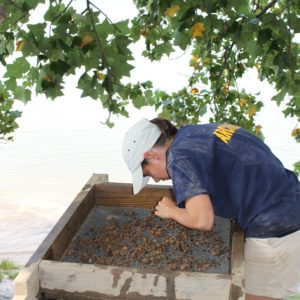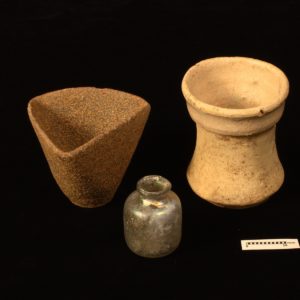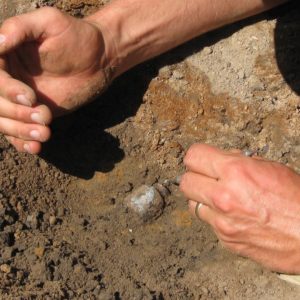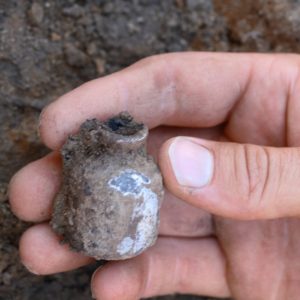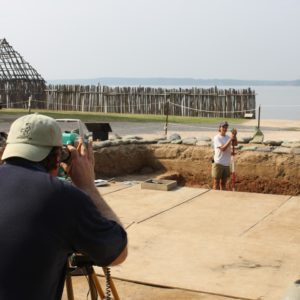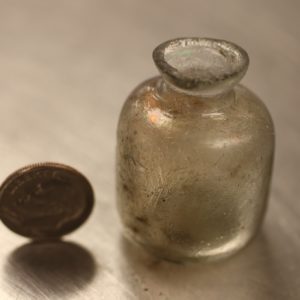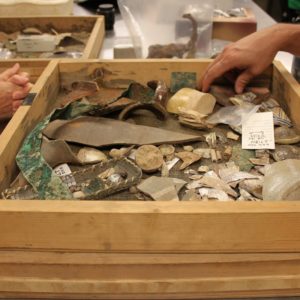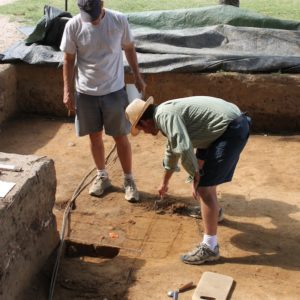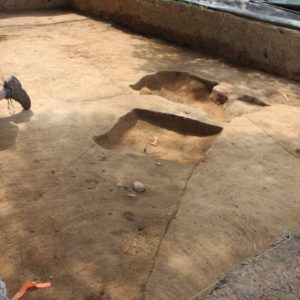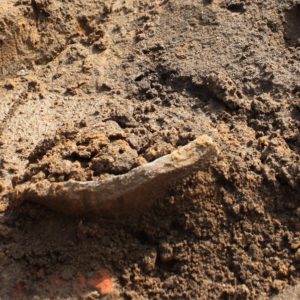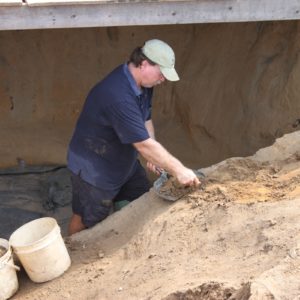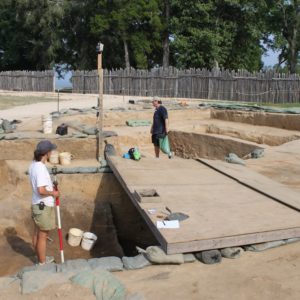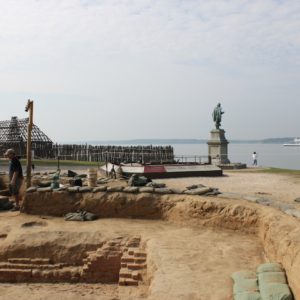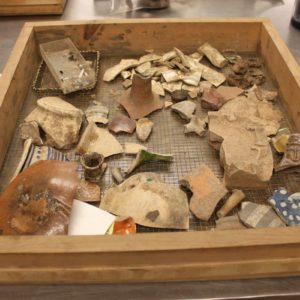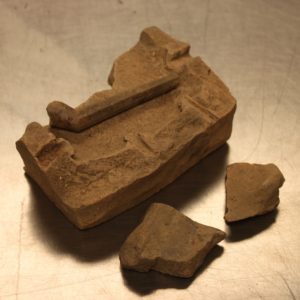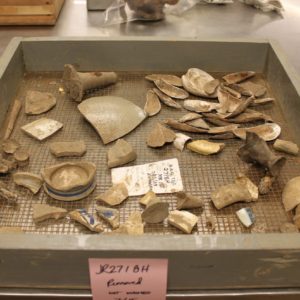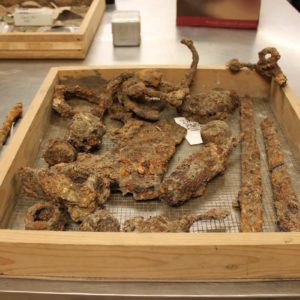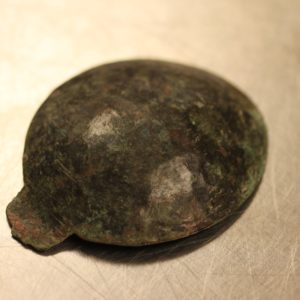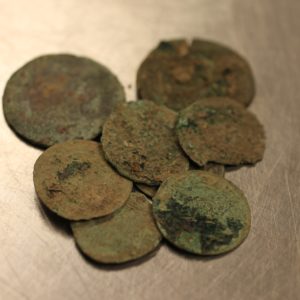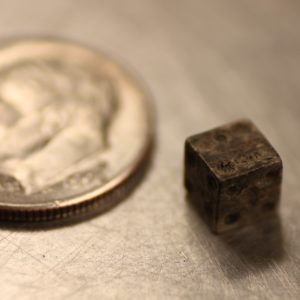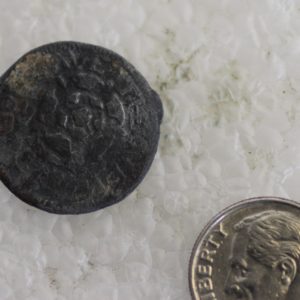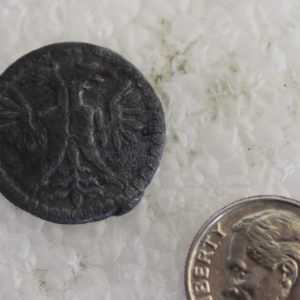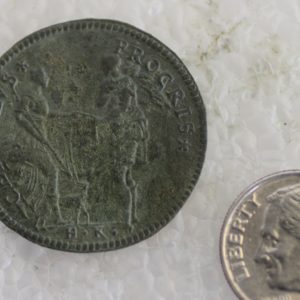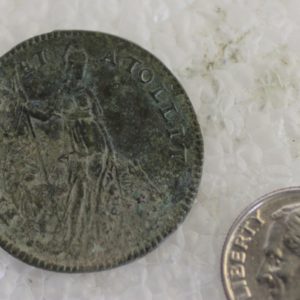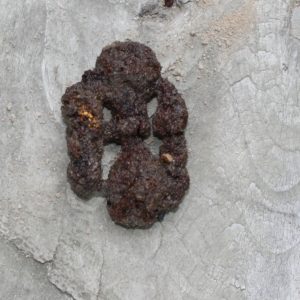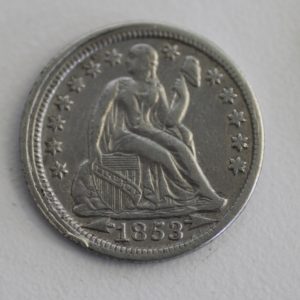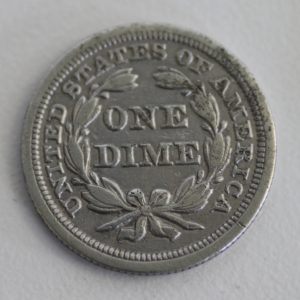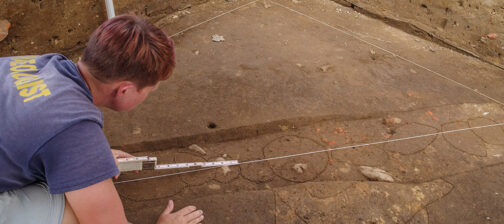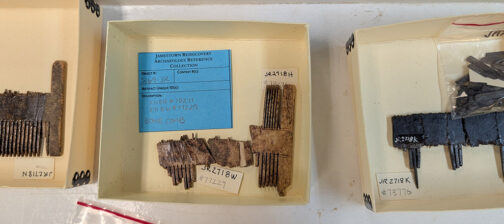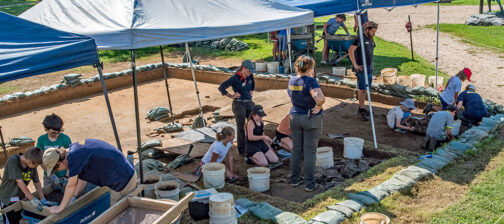Artifacts continue to pour out of what is likely James Fort’s first well, built under the direction of Captain John Smith in early 1609. Sword blades and hilts, coins, tokens, and jettons, cannonballs, pottery from England, France, Germany, and China are among the riches found by the Jamestown Rediscovery team over the past few weeks. The archaeologists are currently excavating approximately half of the well’s width down to about 5 feet, the level at which the first half has already been excavated. Meanwhile, just inside the eastern palisade wall, excavations continue near the church tower. Fort-period postholes and a ditch have been found, as well as six graves, one of which appears to have been the victim of a grave robber many years ago.
There is little doubt that archaeologists have discovered a fort-period well near the center of James Fort. Measuring approximately 12 feet by 14 feet on its sides, the subterranean feature has been excavated to a depth of 5 feet across half of its width, the other half having been left in place to present a cross-section of the soil layers. Currently the other half is also being excavated down to the 4-foot level. These excavations have unearthed hundreds of artifacts including another butchered dog jaw bone, sword blades, a rapier hilt, a dagger hilt, pottery from Europe and Asia, cannonballs, coins, tokens, and jettons. The first wholly-intact, fort-period glass vessel found during the Jamestown Rediscovery project’s history was just excavated from the well. The early nature of the artifacts and the location of the well at the center of the fort suggest that this was most likely the fort’s first well, built in early 1609 while Captain John Smith was the leader of the colony. Prior to the construction of this well, the colonists were drinking water straight from the brackish James itself.
One of the more interesting recent finds is an allegorical jetton made by Hans Krauwinckel II in Nuremberg, Germany in 1589. Jettons were used as tools for counting, and this one depicts a scene from the Greek mythological story of Cephalus and Procris on the obverse. The reverse depicts the Roman goddess Minerva. A lead Elizabethan token was found with “God Save the Queen” around a Tudor rose on the obverse. A double-headed eagle is on the reverse. Fragments of a pipe saggar—a clay container used to hold pipes and protect them from direct exposure to flames while they were being fired—were found in the well. These fragments neatly fit with fragments found in the cellar of a fort-period structure excavated in 2000. The saggar is thought to have been used by Jamestown’s first pipe maker, Robert Cotton, whose pipes, with their telltale diamond markings, have been found throughout the site.
Near the church tower, separate excavations are being conducted just inside the eastern palisade wall in search of fort-period structures. So far seven possible postholes have been found, though it isn’t yet obvious what the function of the postholes is. Six graves have been discovered, and these have been a common find when digging so close to the church tower. The graves will not be disturbed. A fort-period ditch has also been found in the area, but more excavations need to be conducted to determine its form and function. Much of this area was disturbed by the Confederates when they built the earthworks guarding the James against a Union approach. Dirt was removed from here to build the earthworks and thus only the earliest (and deepest) features have survived. One of the graves appears to have been dug into from the side, perhaps by a grave robber looking for valuables. Some early ceramics and a musket ball have been found in this area, as well as an 1853 seated liberty silver dime.
related images
- Volunteer and Field School graduate Patricia Searl screens for artifacts from the well fill.
- Some complete vessels from the feature
- Perfume bottle being found
- Perfume bottle
- Mapping the well feature with a transit
- The first intact fort-period glass vessel found during the Jamestown Rediscovery excavations
- More finds from the well
- Archaeologists Don Warmke and David Givens conduct excavations near the church tower.
- The outline and partial excavation of a fort-period ditch found near the church tower
- A crucible fragment in situ in the well feature
- Archaeologist Dan Smith collects soil for a float sample.
- Archaeologists Mary Anna Richardson and Dan Smith at work in the well feature
- Excavations at James Fort
- Various ceramics found in the well. The blue pottery at the lower-right is Chinese porcelain.
- Fragments of a pipe saggar and a Robert Cotton pipe.
- A tray of various artifacts found in the well
- Recent finds from the well
- A spoon with a missing handle. Note the hammering marks caused by the spoon being worked into shape.
- A collection of copper-alloy coins, tokens, and jettons found in the well
- A bone die
- Lead Elizabethan token obverse. God Save the Queen surrounds a Tudor rose.
- Lead Elizabethan token reverse with a double-headed eagle
- The Hans Krauwinckel II allegorical jetton
- The reverse side of the Hans Krauwinckel II allegorical jetton
- A buckle found while screening
- 1853 seated liberty dime obverse
- 1853 seated liberty dime reverse



